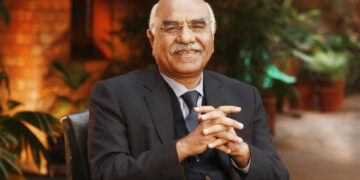On Tuesday, June 12th, Tesla announced plans to lay off 9% of its approximately 40,000 employees. This announcement came just days after the chairman of Tesla’s board, Elon Musk, was almost stripped of his position. Naturally, the sudden decision to let go of thousands of Tesla’s employees a week later led to some people further questioning Musk’s decision making abilities. However, others commended him for taking control of the situation when he released an official statement on social media.
Posting a company-wide email to his twitter account, the chief executive Elon Musk described how Tesla is “conducting a comprehensive organisational restructuring across (the) whole company.” He said that this restructuring is an attempt at reducing bureaucracy and helping the company operate quicker than ever before.
“Tesla has grown and evolved rapidly over the past several years, which has resulted in some duplication of roles and some job functions that, while they made sense in the past, are difficult to justify today,” Musk wrote.
Undoubtedly, Musk’s attempt at “flattening (the) management structure,” at Tesla will have positive and negative impacts. However, many business analysts are arguing that these impacts will largely benefit Tesla. By eliminating the middle management from the hierarchal structure, Tesla can greatly improve its remaining employee’s motivation levels. This is because research shows that delayering can help improve communication between the higher management and the employees, increasing overall productivity.
The most obvious benefit will, of course, be the lower overhead costs. Michelle Krebs, executive analyst for the online car marketplace Autotrader, said: “Tesla has signalled organisational changes in recent weeks and here it is. It is clear that Tesla is under tremendous pressure to finally turn a profit and is attempting to address it by cutting overhead. Also notable is Tesla is not cutting production jobs at a time when pushing Model 3’s out the door is a top priority.”
However, not everyone is so optimistic about Tesla’s decision. Rebecca Lindland, executive analyst at Kelley Blue Book, pointed out that Tesla is already finding it difficult to match supply with the demand for its cars, which will only be made worse by this large lay off. Demand is high for, specifically, the new Model 3, yet Tesla’s factories are months behind schedule.
Musk says that this is because, “we (were) trying to automate things that are super easy for a person to do, but super hard for a robot to do.”
These set-backs in production do make it seem as if letting go of 9% of its workforce will not be doing Tesla any good in the coming months. However, Musk assured everyone that the employees being let go were white-collar, salaries staffers, not production workers. This is why he believes that the restructuring will not harm Tesla’s ability to reach production targets.
This goes to show how every business decision can have wide ranging impacts, some positive and some negative. Whether or not his predictions hold true, it is clear that Musk weighed the positives and negatives of laying off 9% of Tesla’s workforce before making the decision. Which is perhaps why Tesla’s stock is still up more than 40% from its 52-week low in April. While Tesla’s stock did take a hit after the announcement, it is still only 10% away from its all-time high. This shows us that the most important thing in business decision-making is understanding that your decision will have wide-ranged consequences; but that once you have weighed these consequences, you must focus on the execution.












